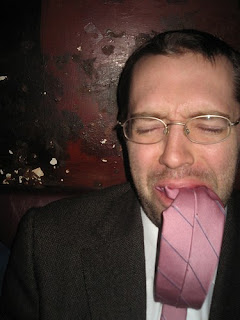 What would you do if a fund manager was promising you a one-time 30% annual return? Setting aside a philosophical debate about "promising" a "return," you'd give him just about all of your savings as fast as possible.
What would you do if a fund manager was promising you a one-time 30% annual return? Setting aside a philosophical debate about "promising" a "return," you'd give him just about all of your savings as fast as possible.I have a tip for you. All you need is the ability to withdraw a chunk of money and be ok with not having access to it for about four months. Actually, that makes this more like a 4-month CD. A CD with a 30% yield.*
Anyway, take as much money as you can temporarily live without and deposit it at sportsbook.com. Then go to the Baseball tab and find the link for "Stephen Strasburg Props." Put a check next to the box that says NO (-1000) under the "Will He Record a No Hitter During the 2010 Regular Reason." Wager all of your deposit on this bet.
Then all you do is wait four months and collect.
-1000 gives a 10% return. Bet 100, win 10. Simple. The perfect bet is real.
But allow me to break it down for you.
The most prolific no-hit pitcher ever, Nolan Ryan, had seven in his career, which spanned 773 starts, for a rate of 0.9% of all starts.
Sandy Koufax is second all-time, with four but in just 314 career starts, so 1.27% of all starts.
That's for a career. Additionally--looking only at the far outliers, and allowing for small-sample wildness--four times a pitcher has thrown two in a single season:
Ryan, 2 in 39 starts, 5.1%
Allie Reynolds, 2 in 26 starts, 7.69%
Virgil Trucks, 2 in 29, 6.9% (amazingly he went only 5-19 that year)
Johnny Vander Meer, 2 in 29, also 6.9%
Next, and very importantly, consider that Strasburg has an innings cap for 2010 of about 160. He's already thrown 62, so he's got less than 100 to go. That equates to maybe 15 more starts. One no hitter in 15 starts is a rate of 6.67%. So they've set his line at about equal to the greatest no-hitter seasons ever. We could have a long discussion about probability if you like, but the bottom line is you can never ever predict something to be the farthest outlier on the line. It's impossible.
That out of the way, there's more. In addition to an innings cap, Mr Strasburg will have a pitch max within each of his starts. This will be slightly more flexible than his year-long innings max but even being liberal you can assume that he wont ever be throwing more than 110 pitches, and the likelihood of him throwing over 100 is low, maybe 3-4 times out of 15. Here is a little secret: to throw a no-hitter you have to complete the game. This week he dominated the AAAA Pirates, but it took him 94 pitches to get through 7 innings. To finish the game at that rate, he'd require over 120. And that is not an uncommon rate of pitches thrown. Covering all of 2009, there were 4,860 starts made by pitchers. 152 times the pitcher threw a complete game. 97% of the time, a starting pitcher failed to complete the game. Even just applying this expected rate of simply completing the game, it takes an average pitcher 32 starts to compile one complete game. Again, Strasburg has only about 15 to work with, and we're only talking about complete games, let alone no hitters. For more perspective there, since the last expansion in 1998, there have been 21 no hitters in over 60,000 starts made. That's 0.035%, one in 2,857. It's ridiculous, utterly ridiculous, to think that one guy could have anything even remotely close to a 9% chance of throwing a no hitter in his next 15 starts. I don't care if that guy is a robot.
Adding these factors together, what is required of Strasburg to cause you to lose your NO no hitters bet is for him to equal the best no hit rates of all time, but to do so with both hands tied behind his back.
Anything is possible, that is a fact. But when gambling you can't consider the fluke possibilities, you have to focus on the most likely scenarios. When the break-even point for a bet is 9.1%, and the actual chance of it happening is easily less than 1%, then you jump all over it. It's the perfect combination really: an incredibly low chance of losing (well less than 1% that he gets a no-no), coupled with a payout that is at least ten or twenty times higher than it should be.
*Via Chase, the shortest CD they offer is for six months. The return yield is 0.50%, a mere 60 times lower than our proposed bet here.


No comments:
Post a Comment